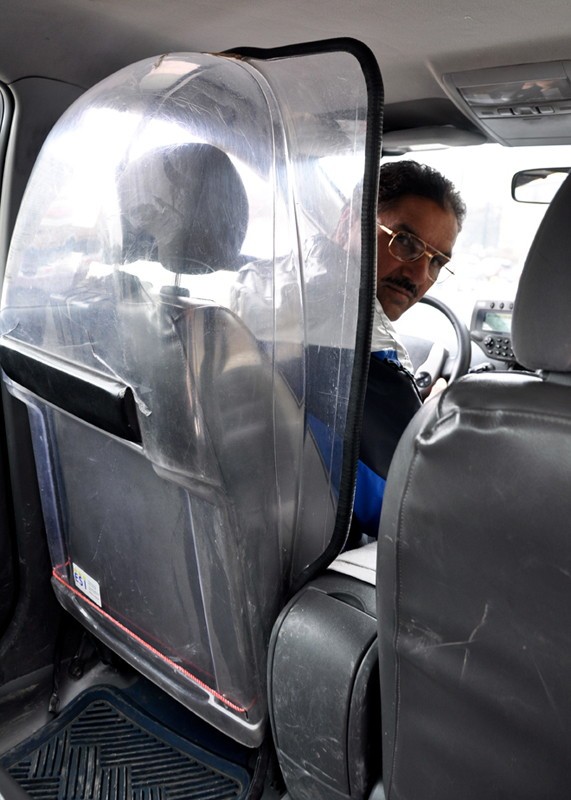Winnipeg taxis beef up security
Taxicab board says new shields difference between life and death
A recent wave of attacks against Winnipeg cab drivers has prompted the Manitoba Taxicab Board (MTB), the provincial regulator, to seek new security measures that will expand the plastic shield that separates cab drivers from their passengers.
Records compiled by Winnipeg Police Service Patrol Sgt. and member of the MTB Rick Zurba show that there have been 14 criminal incidents involving passengers and taxi drivers over the last three months in the city. The incidents have varied from assault or assault with a weapon to robbery and carjacking.
The MTB, based on its own records, media reports and the testimony of Winnipeg cab drivers, has made the decision to upgrade current cab security systems.
“There are many options on the table,” said MTB secretary Jerry Kozubal. “[But] right now the industry [wants] an L-shaped shield.”
An L-shaped shield would protect drivers from attacks from the passenger seat and the rear and would still leave room for four passengers.
The other option, Kozubal said, is a full shield spanning the length of the vehicle, similar to barriers in police vehicles. A full shield, however, would leave a maximum of only three passengers per cab, resulting in industry representatives thinking it unfavourable.
Some cab drivers feel that the industry is settling for the L-shape because fewer passengers will amount to less revenue.
“They [the cab companies] know that they can’t put the full shield in because people are already complaining about how cramped the cabs are,” said Michael Kneeshaw, a driver with Winnipeg’s Unicity taxi.
Kneeshaw has been forced to push his seat back into the passenger area due to obesity.
“This [L-shaped] shield will be like being stuck in a phone booth,” he said, adding that he may be forced to quit because the shield will bring the drivers seat forward, leaving him unable to fit between the steering wheel and the back of his chair.
Kneeshaw has been a driver with Unicity for 30 years and will be eligible for retirement when he turns 65 in 21 months. He is afraid that the new shield may affect his retirement plans.
The MTB says that all issues will be investigated before the shields are implemented.
“Drivers, particularly those that work at night ... [won’t] object to these measures once they’re implemented,” said Kozubal.
How the upgrades will be paid for, however, remains unclear. When the current cab shields were made mandatory in 2003, Winnipeggers saw a 25-cent increase in city cab fares. Last year, city residents faced yet another surcharge of 20 cents to pay for upgrades to in-cab security cameras.
“If the cost is minimal, it will be incurred by the industry,” said Kozubal. He added that cab companies do have the option of going to the board to request a fare increase.
In addition to the shield, the MTB has committed to a new driver-training program developed in consultation with Workplace Health and Safety, Manitoba Labour and the Winnipeg Police Service. The board also plans to enhance the public distress signal found on the roof of city cabs. According to many, the blinking sign is not visible during the day and is rarely acknowledged at night.
“Everything is going to evolve over the next month or so,” said Kozubal, adding that advertising may be needed so that the public responds to distress signals. He also says cabs need signage indicating the driver’s right to charge patrons in advance or refuse service altogether.
Published in Volume 64, Number 23 of The Uniter (March 18, 2010)








